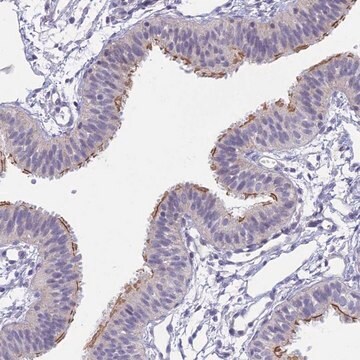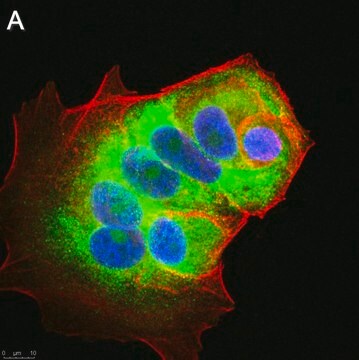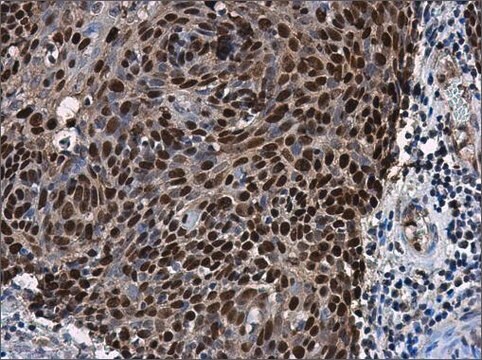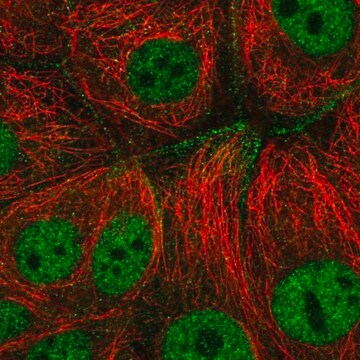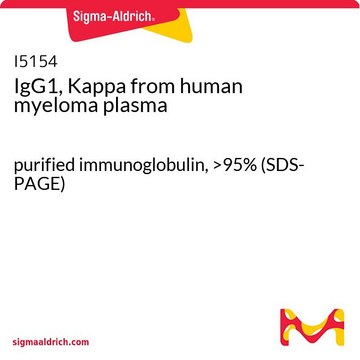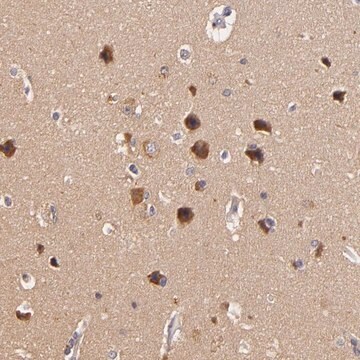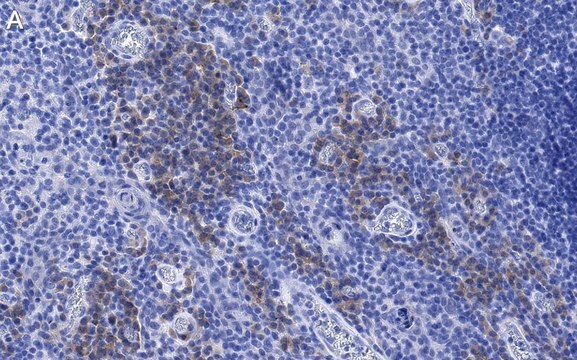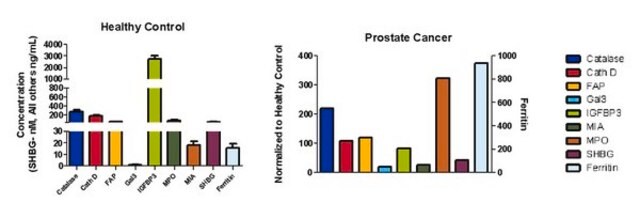MABT1547
Anti-CFAP206 Antibody, clone ORF2-2A7
Synonim(y):
Białko związane z rzęskami i wici 206
About This Item
Polecane produkty
pochodzenie biologiczne
rat
Poziom jakości
forma przeciwciała
purified antibody
rodzaj przeciwciała
primary antibodies
klon
ORF2-2A7, monoclonal
masa cząsteczkowa
calculated mol wt 70.95 kDa
observed mol wt ~70 kDa
oczyszczone przez
using protein G
reaktywność gatunkowa
mouse
opakowanie
antibody small pack of 100 μL
metody
western blot: suitable
izotyp
IgG2aκ
sekwencja epitopowa
C-terminal
numer dostępu Protein ID
numer dostępu UniProt
temp. przechowywania
2-8°C
informacje o genach
mouse ... Cfap206(69329)
Specyficzność
Immunogen
Zastosowanie
Oceniane metodą Western Blotting w ekstrakcie tkankowym z jąder myszy.
Analiza Western Blotting: Rozcieńczenie 1:500 tego przeciwciała wykryło CFAP206 w ekstrakcie tkanki jądra myszy.
Testowane aplikacje
Analiza Western Blotting: Reprezentatywna partia wykryła CFAP206 w aplikacji Western Blotting. (Beckers, A., et al. (2020). Rozwój. 147(21):dev188052).
Uwaga: Rzeczywiste optymalne rozcieńczenia robocze muszą być określone przez użytkownika końcowego jako próbki, a warunki eksperymentalne mogą się różnić w zależności od użytkownika końcowego.
Opis wartości docelowych
Postać fizyczna
Rekonstytucja
Przechowywanie i stabilność
Inne uwagi
Oświadczenie o zrzeczeniu się odpowiedzialności
Nie możesz znaleźć właściwego produktu?
Wypróbuj nasz Narzędzie selektora produktów.
Kod klasy składowania
12 - Non Combustible Liquids
Klasa zagrożenia wodnego (WGK)
WGK 1
Temperatura zapłonu (°F)
Not applicable
Temperatura zapłonu (°C)
Not applicable
Certyfikaty analizy (CoA)
Poszukaj Certyfikaty analizy (CoA), wpisując numer partii/serii produktów. Numery serii i partii można znaleźć na etykiecie produktu po słowach „seria” lub „partia”.
Masz już ten produkt?
Dokumenty związane z niedawno zakupionymi produktami zostały zamieszczone w Bibliotece dokumentów.
Nasz zespół naukowców ma doświadczenie we wszystkich obszarach badań, w tym w naukach przyrodniczych, materiałoznawstwie, syntezie chemicznej, chromatografii, analityce i wielu innych dziedzinach.
Skontaktuj się z zespołem ds. pomocy technicznej